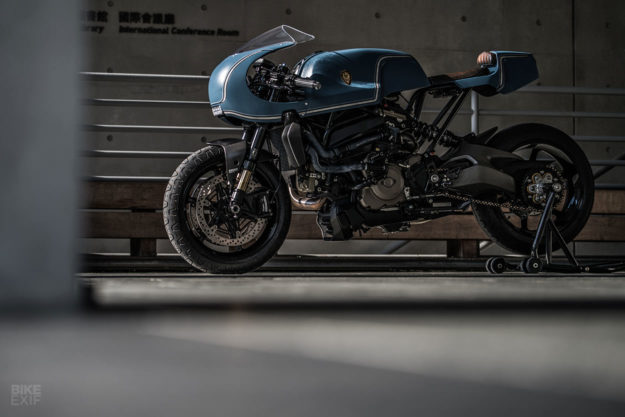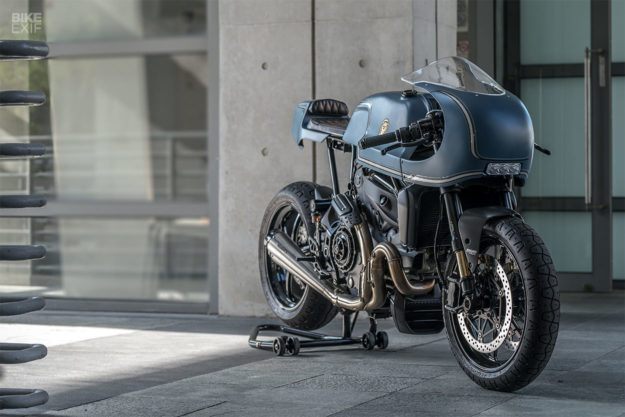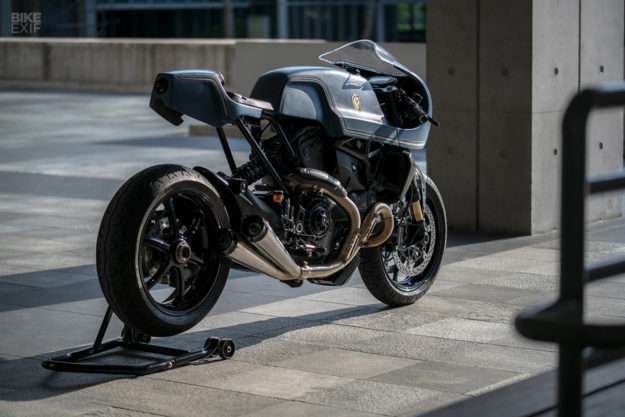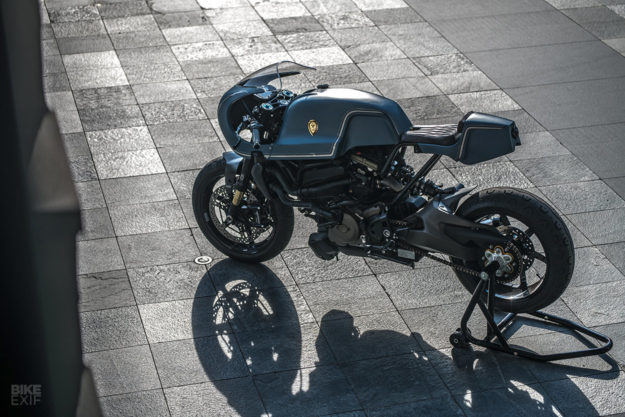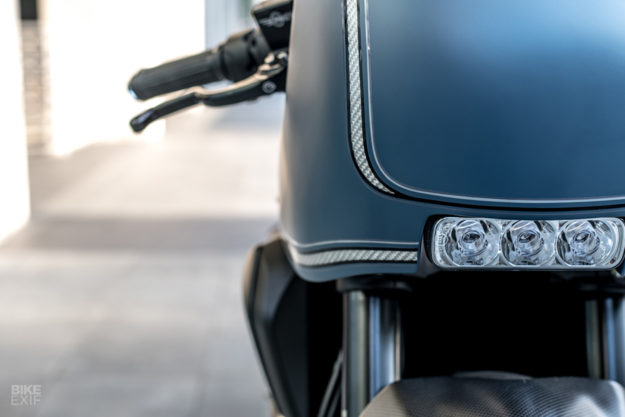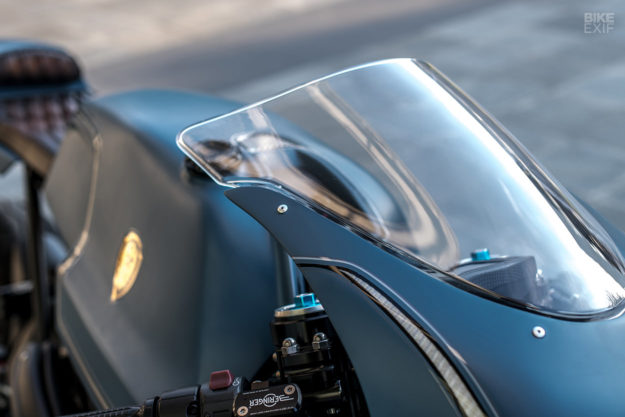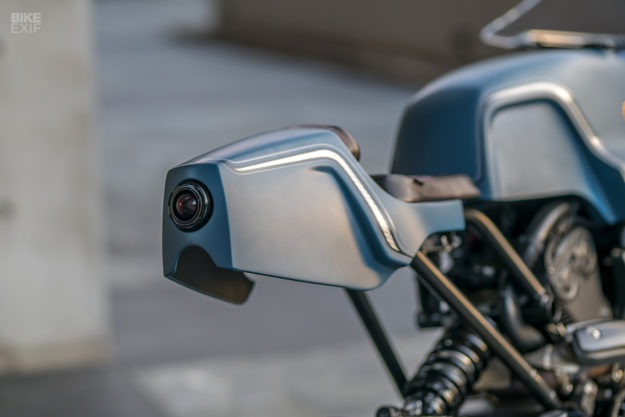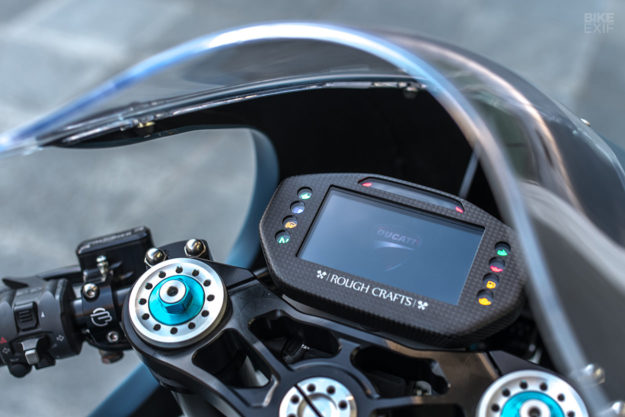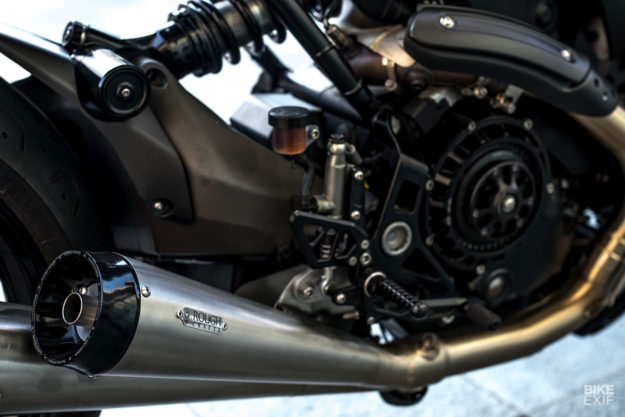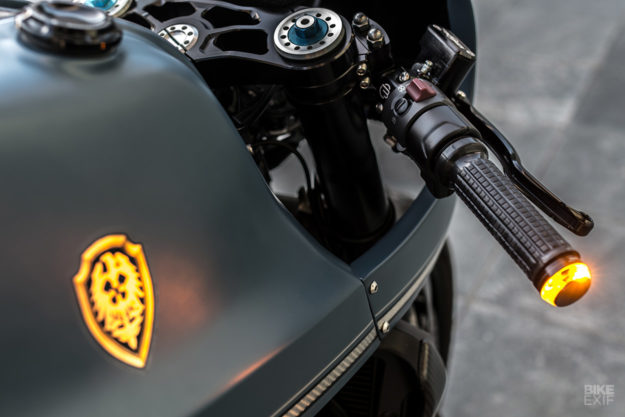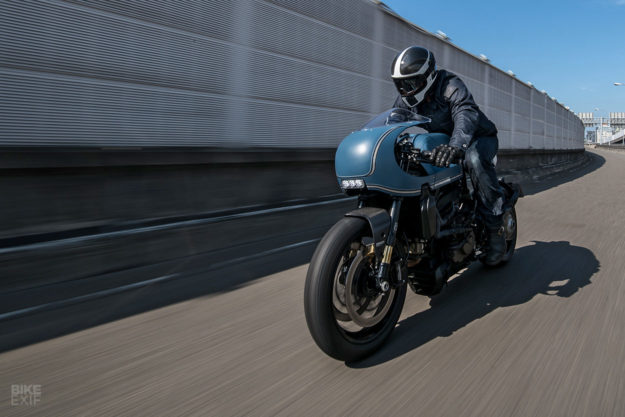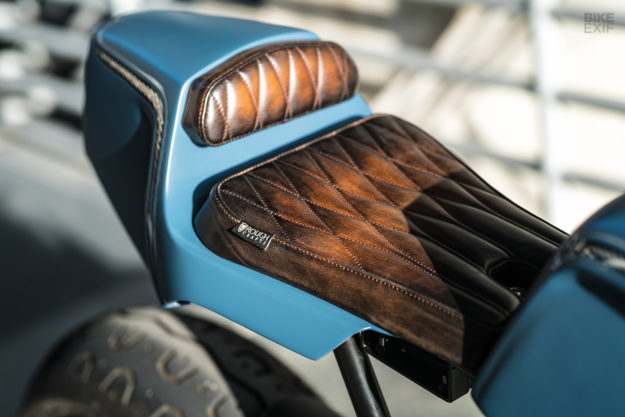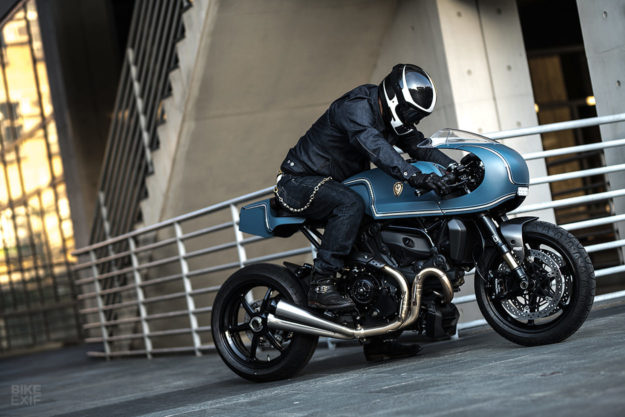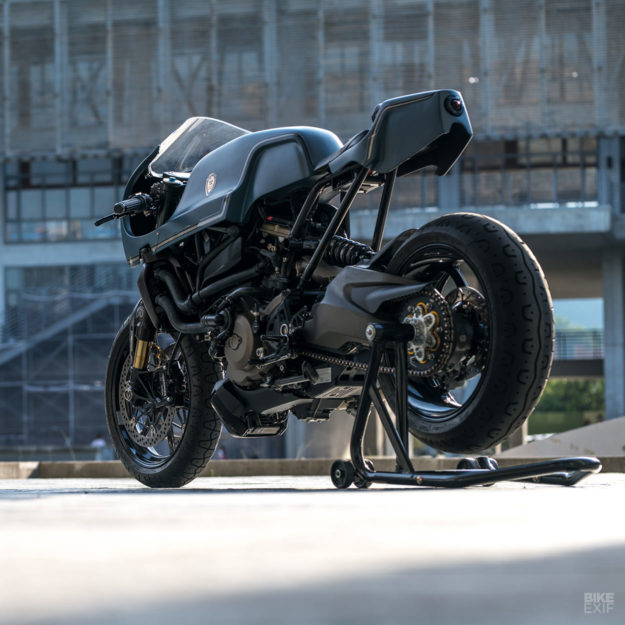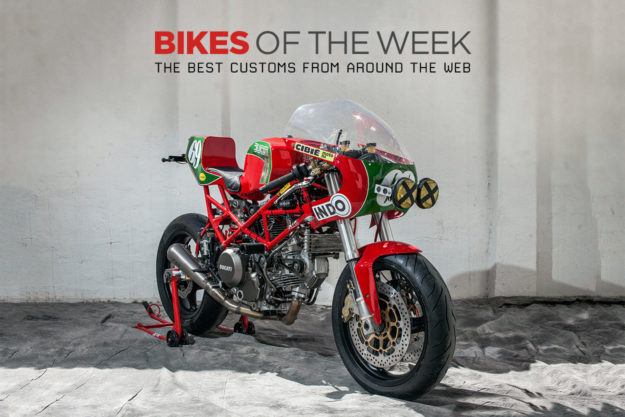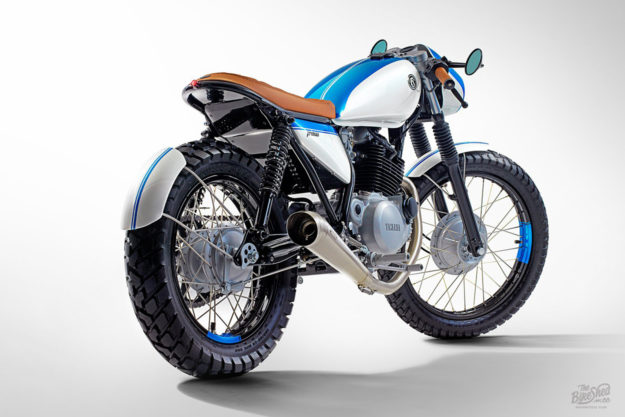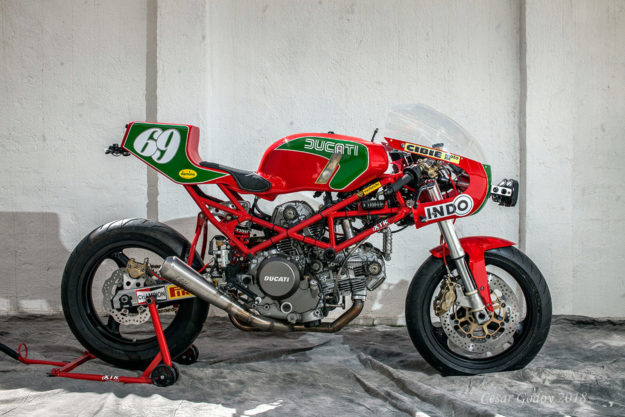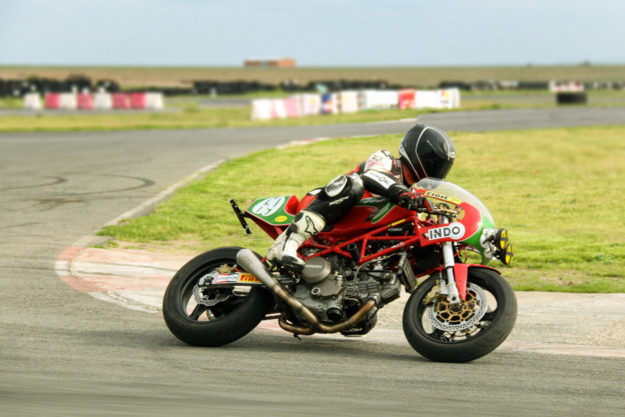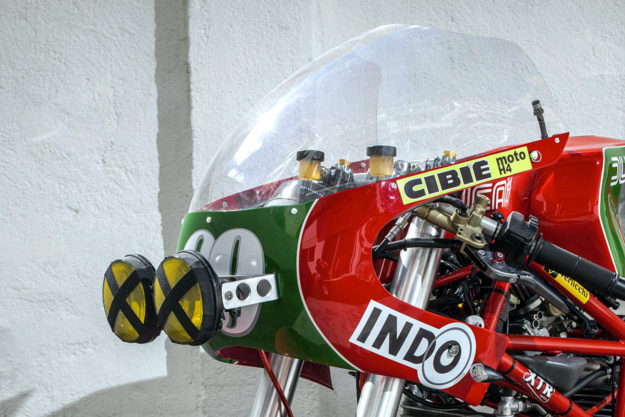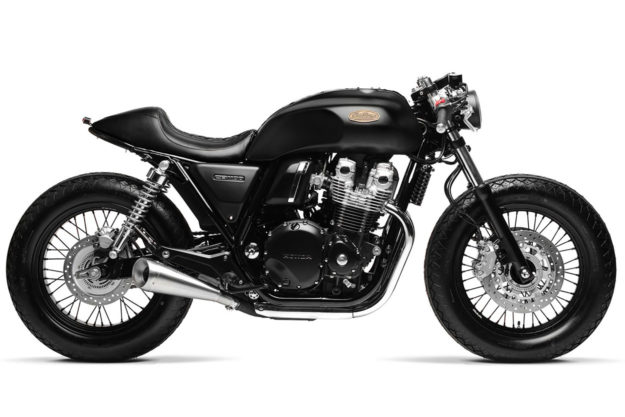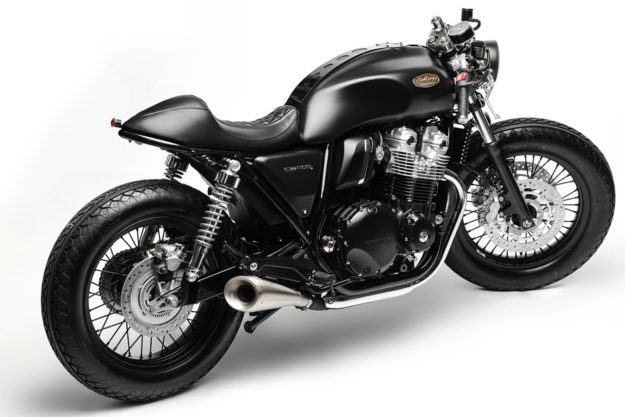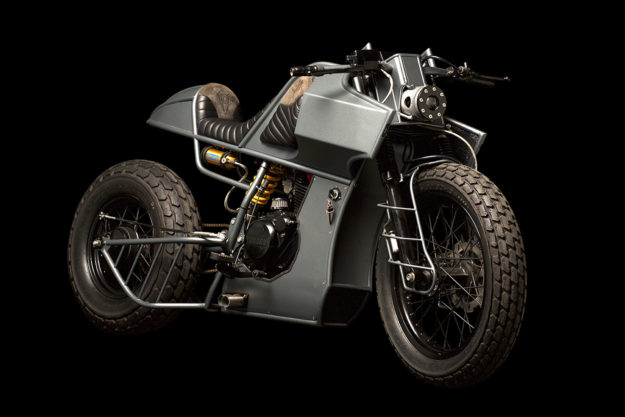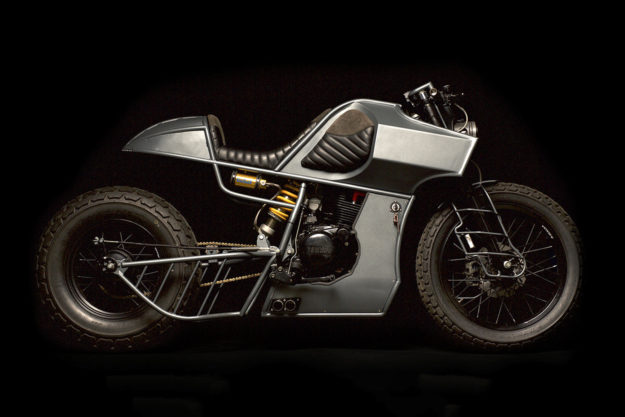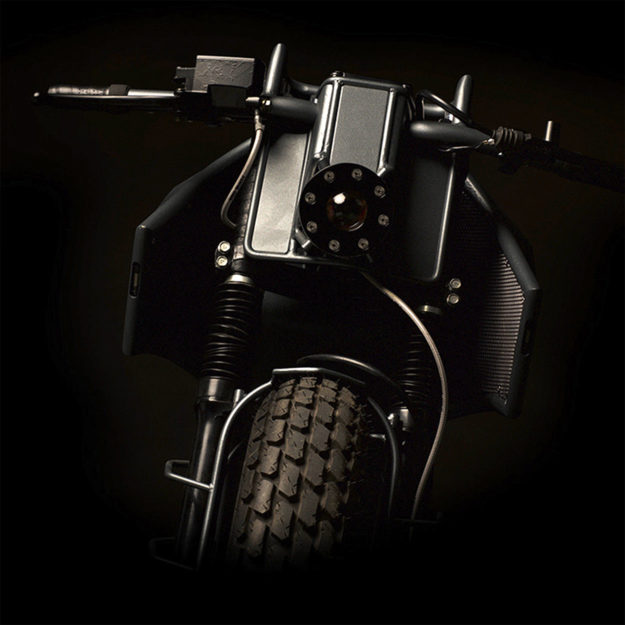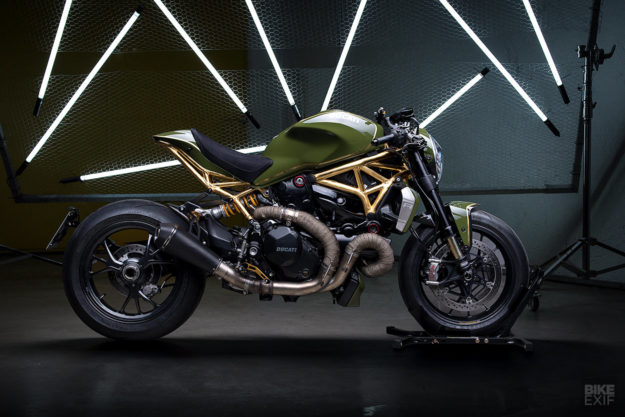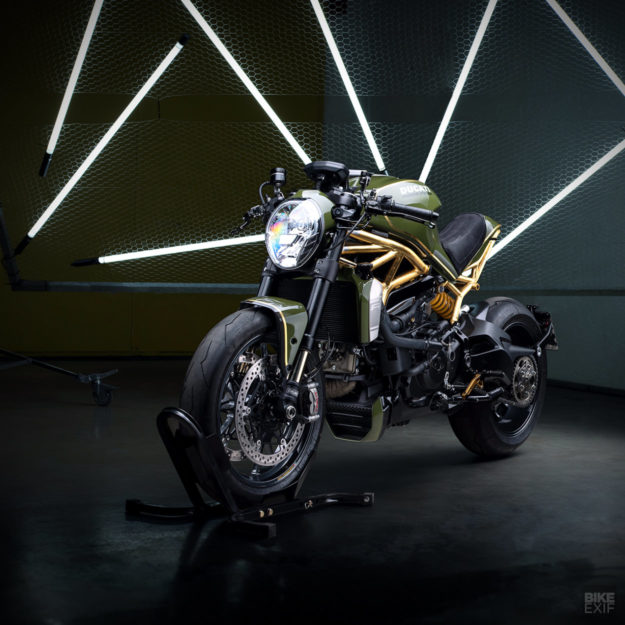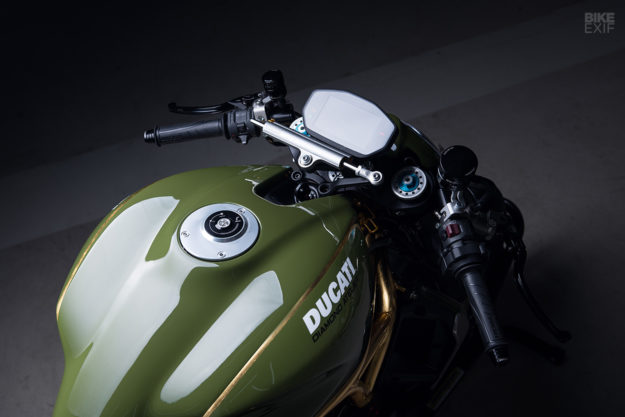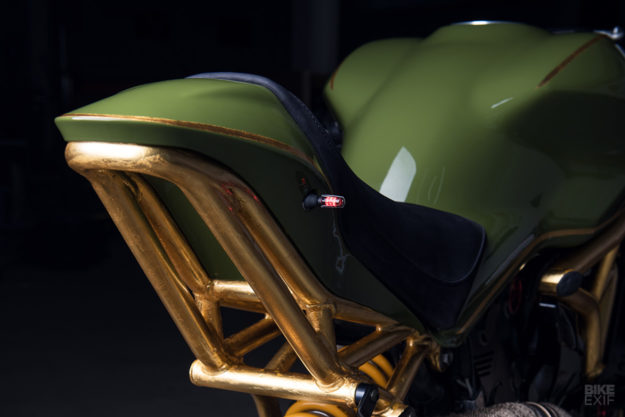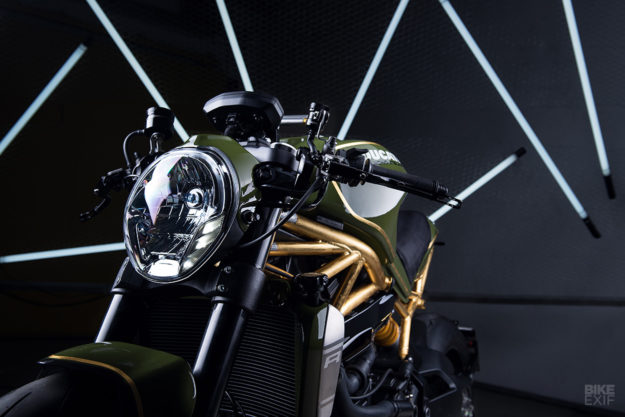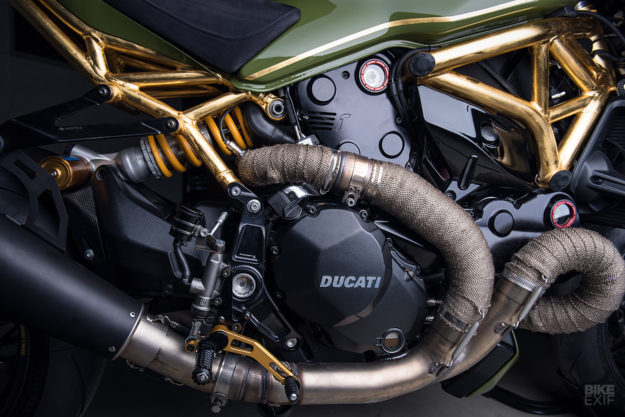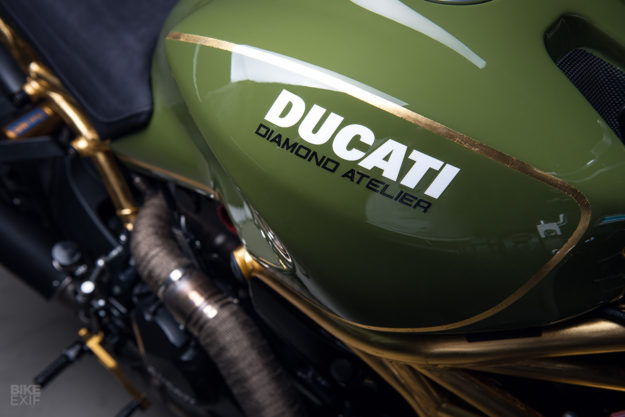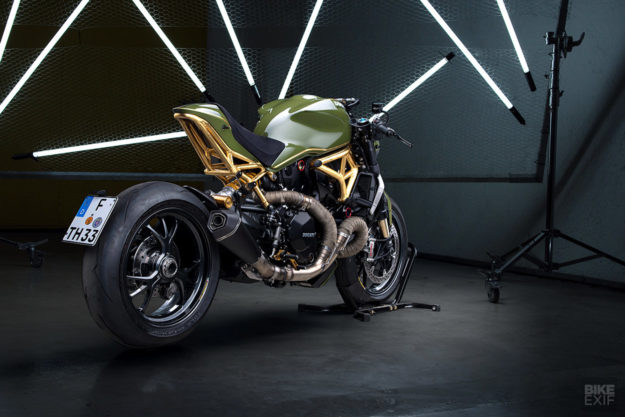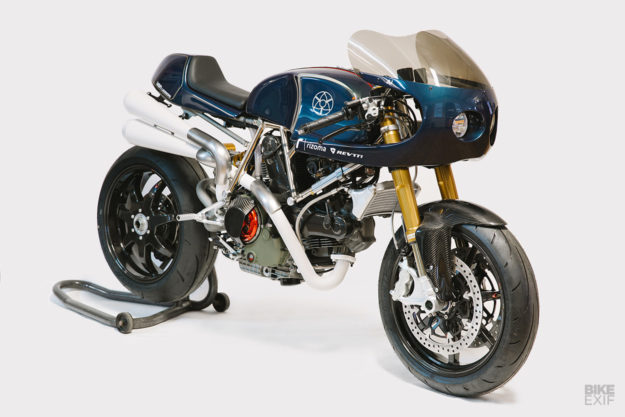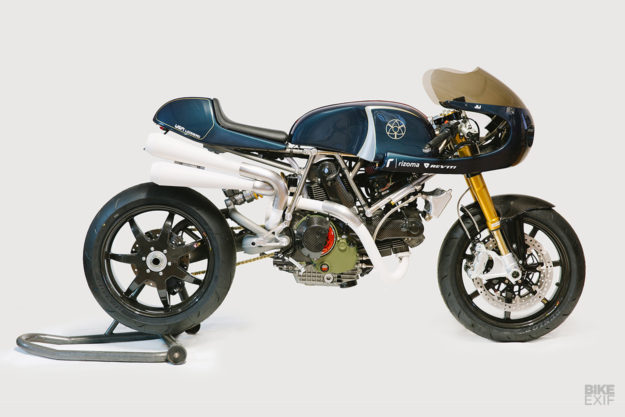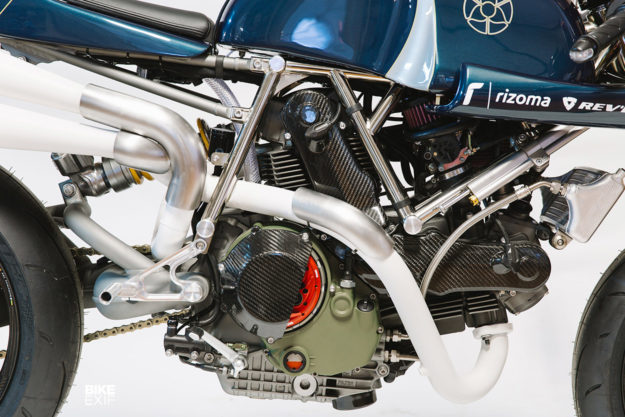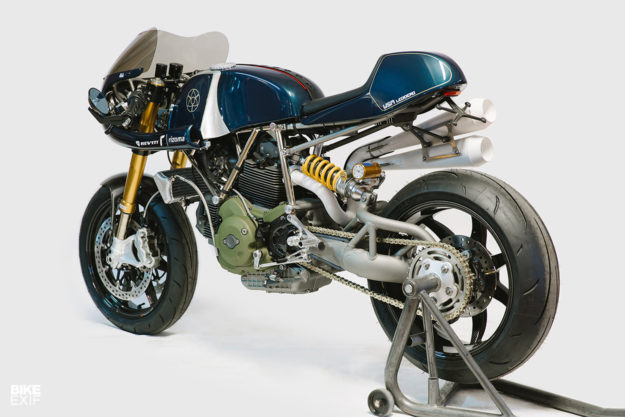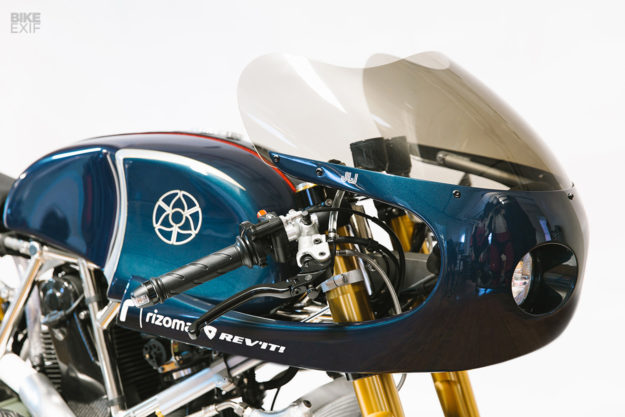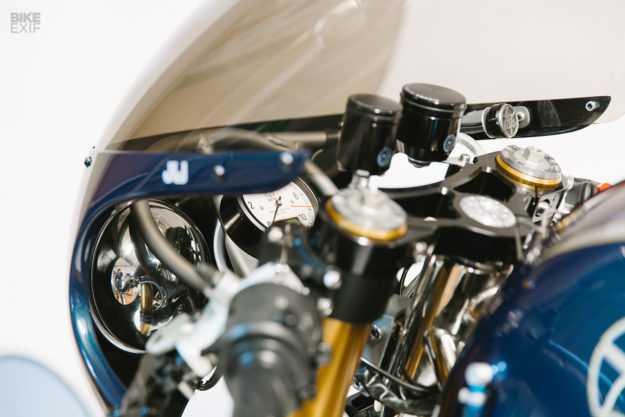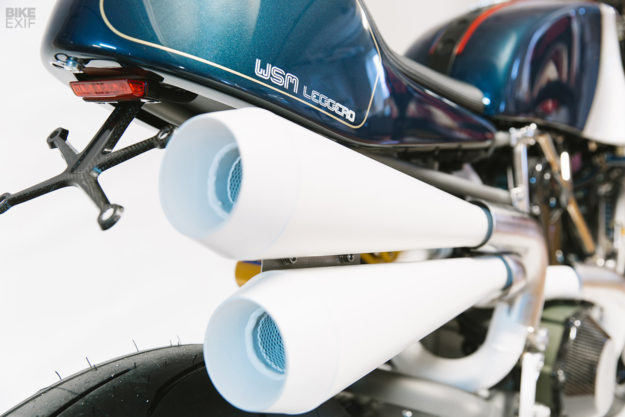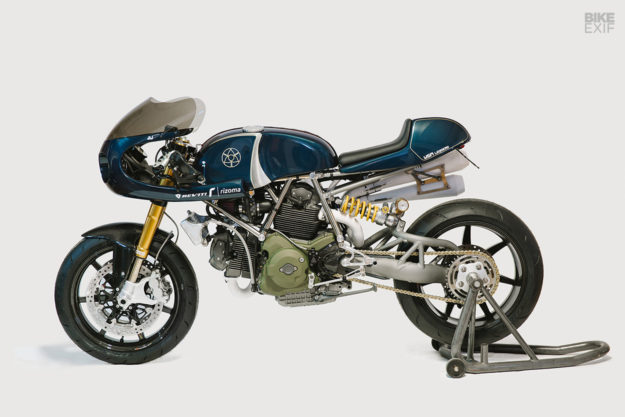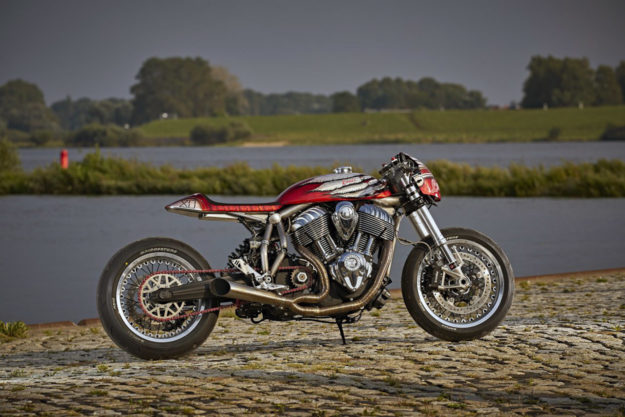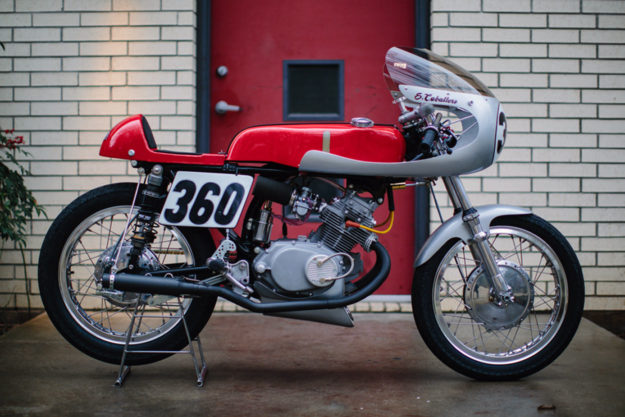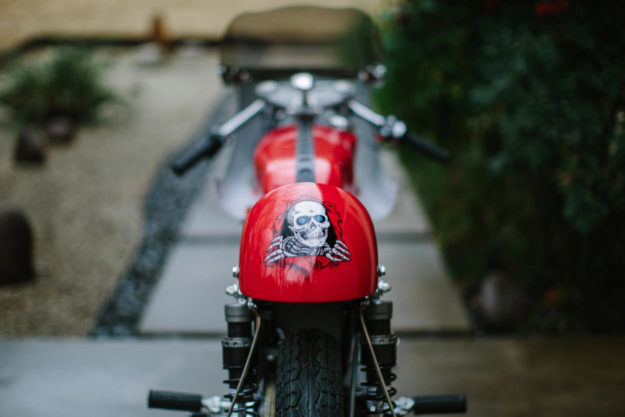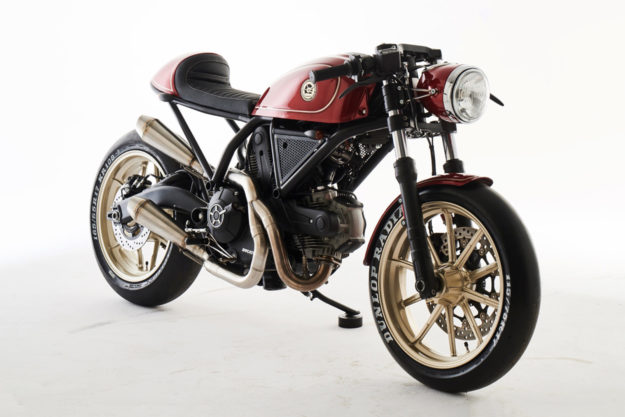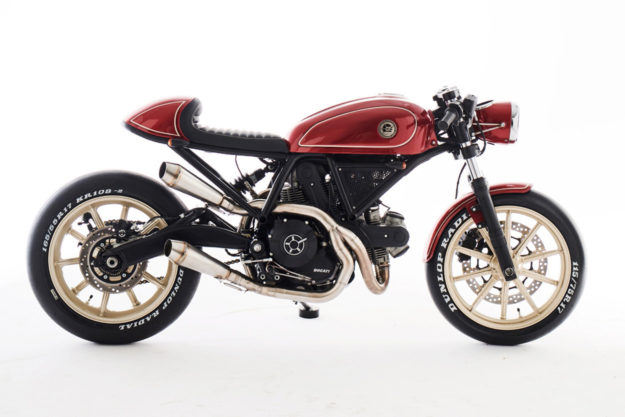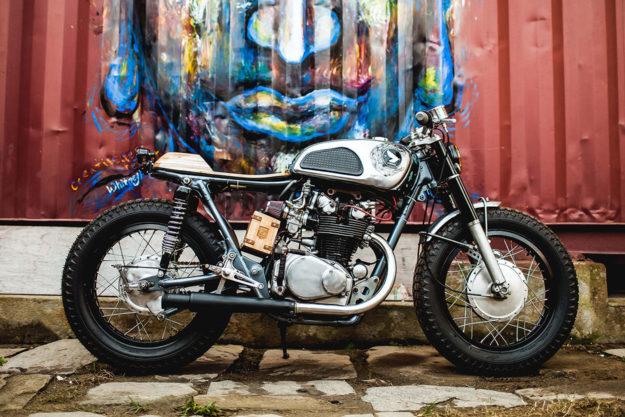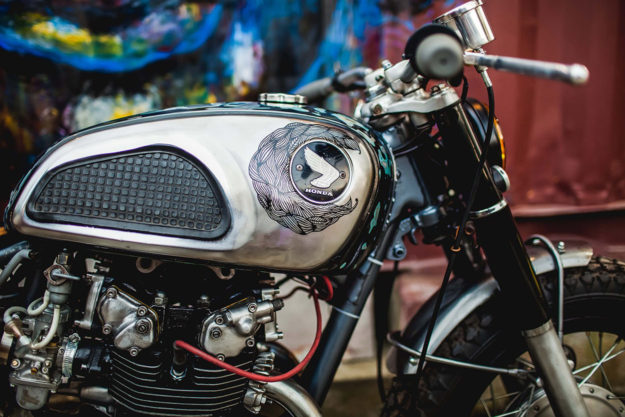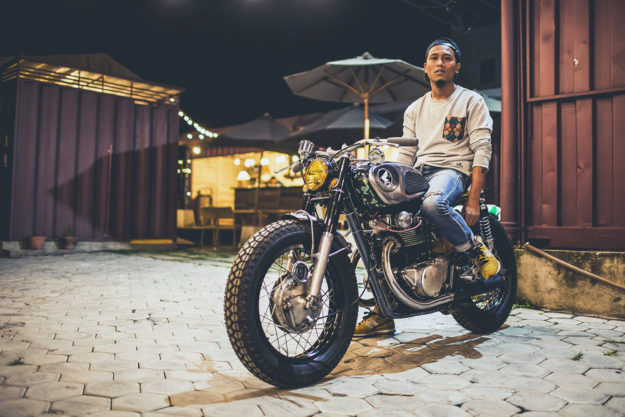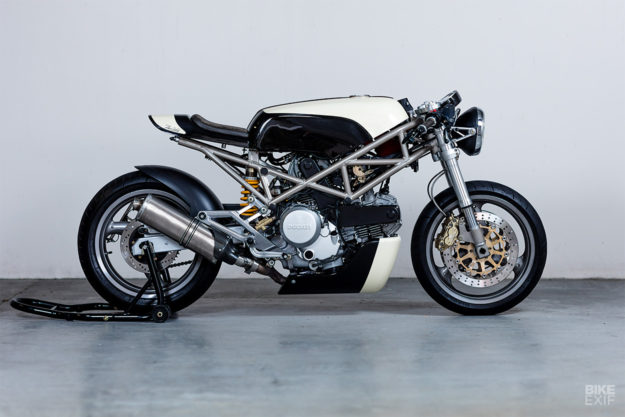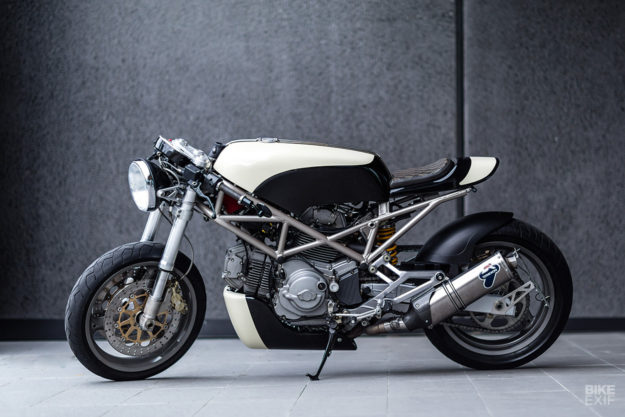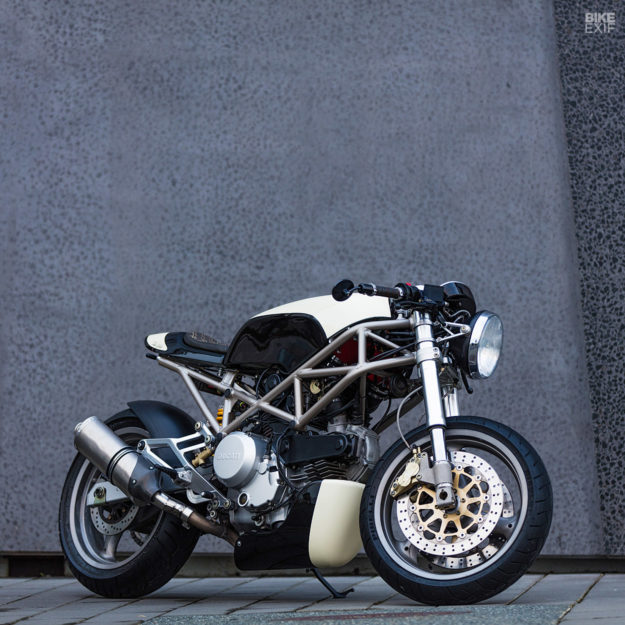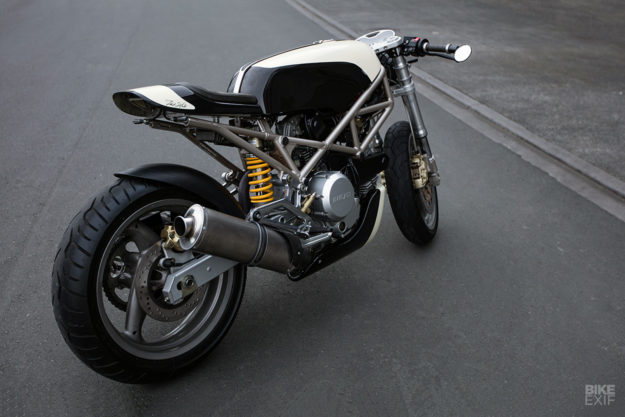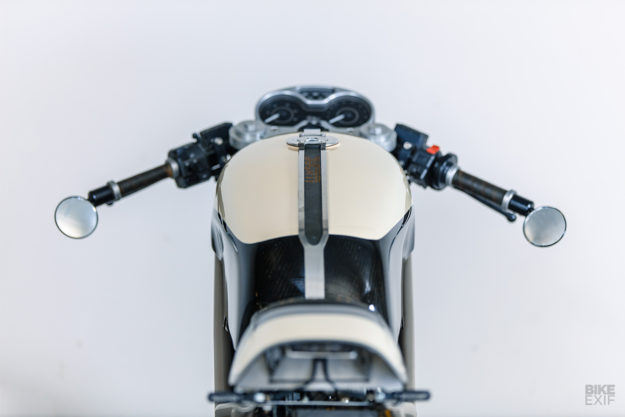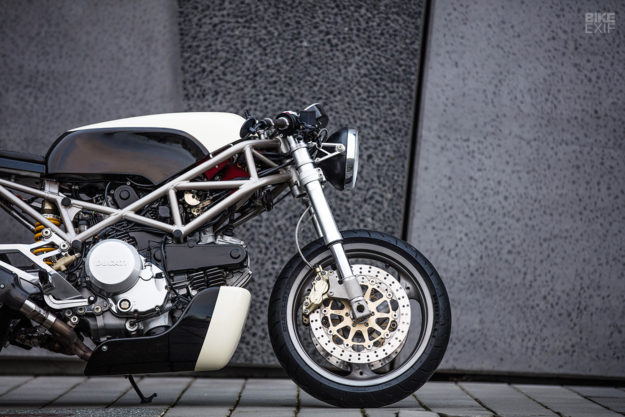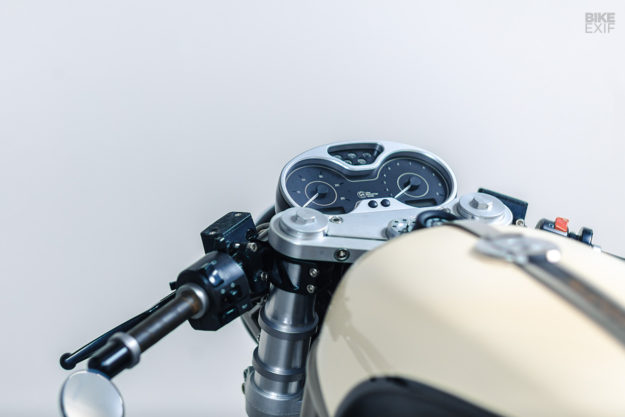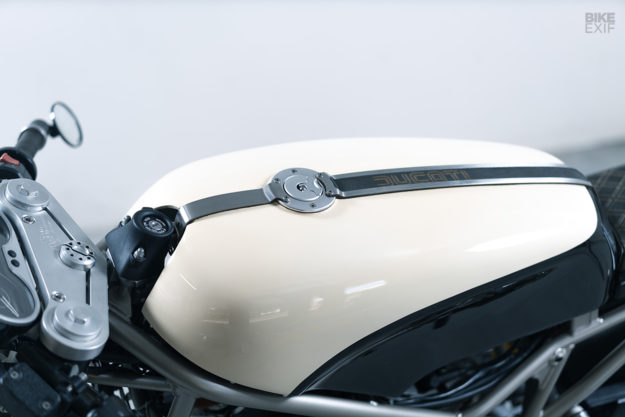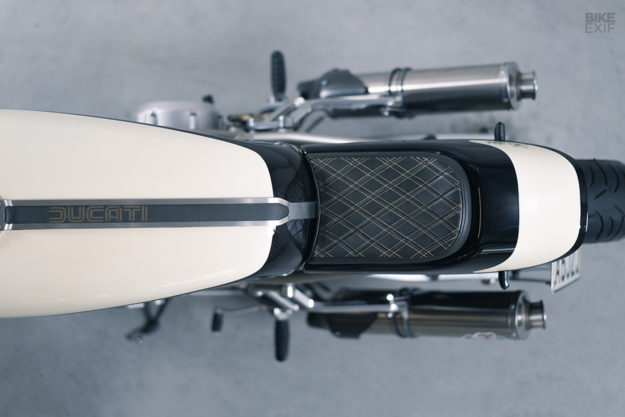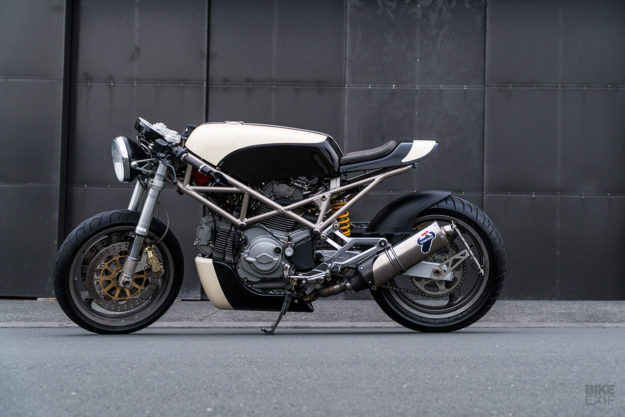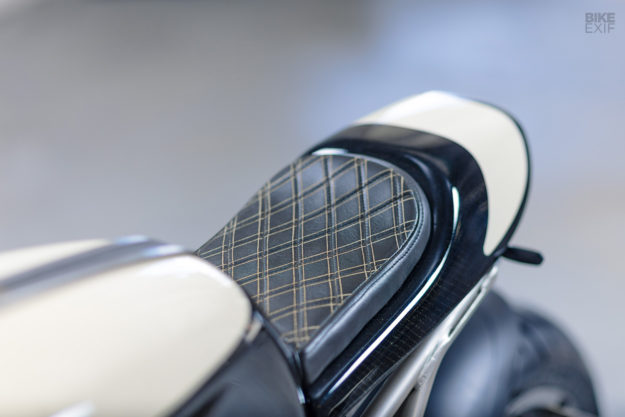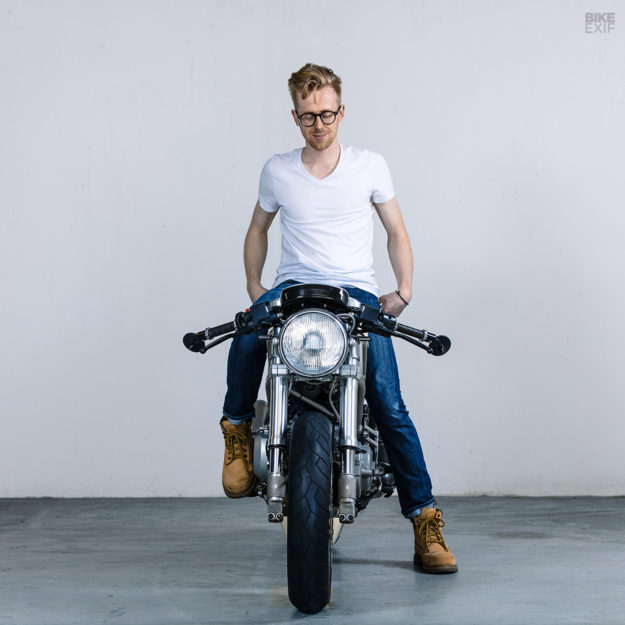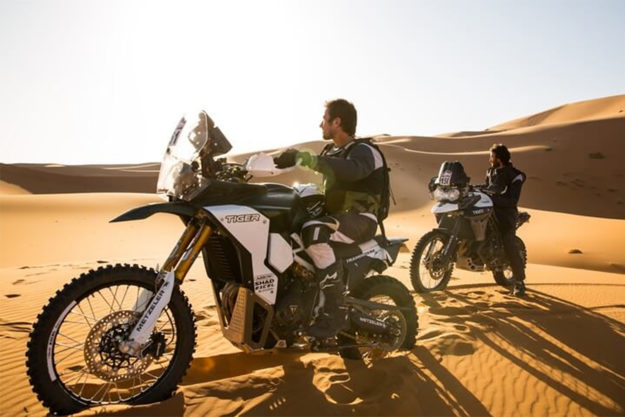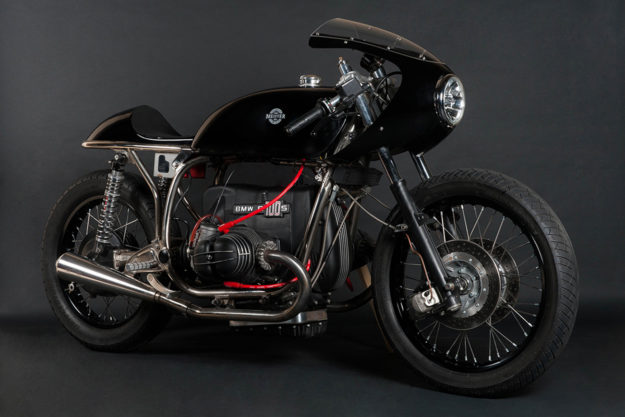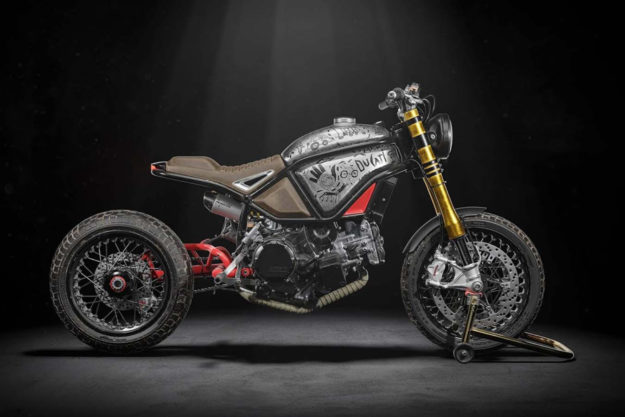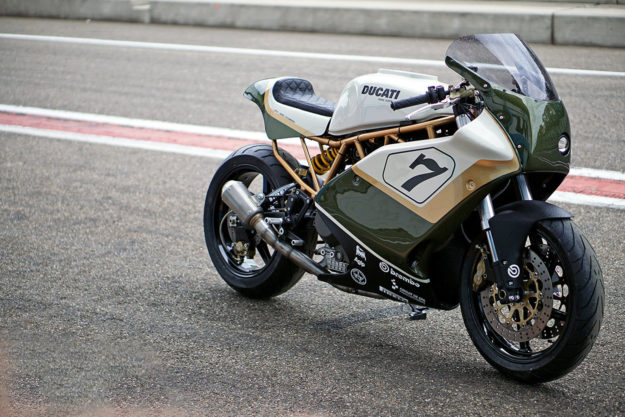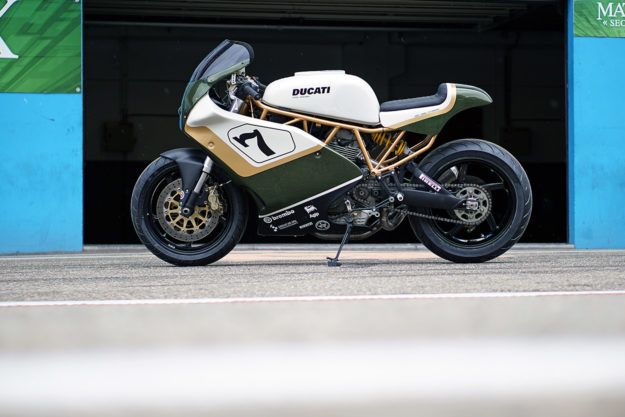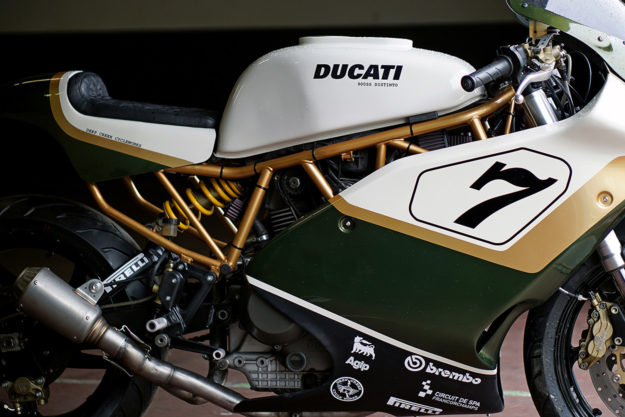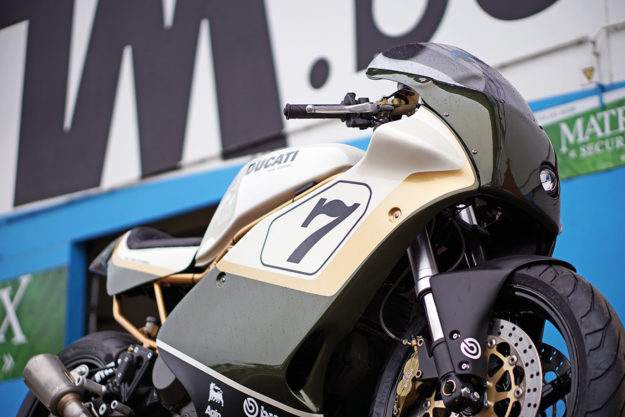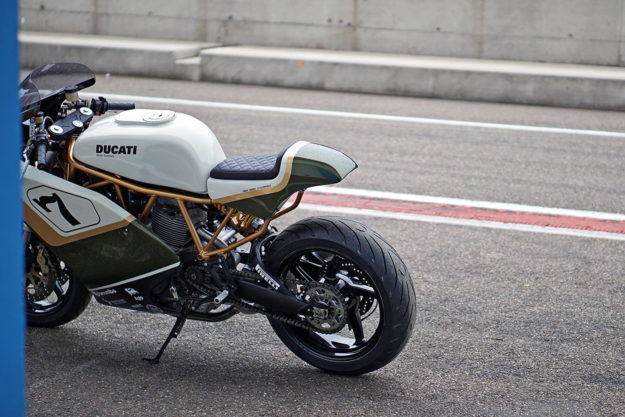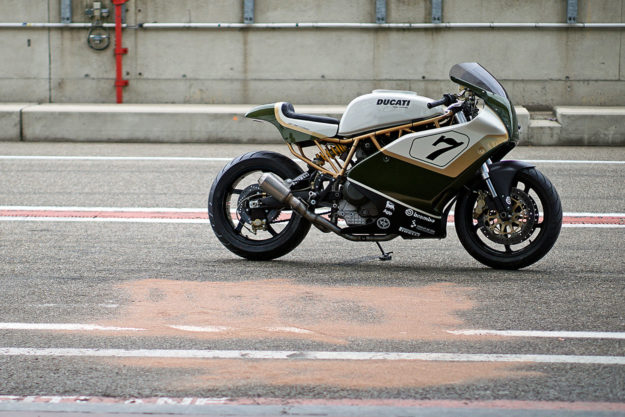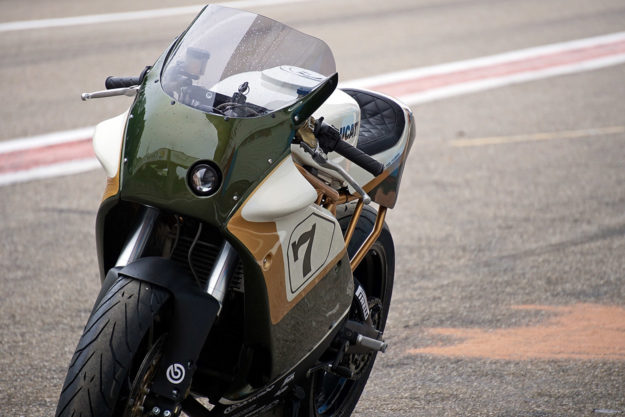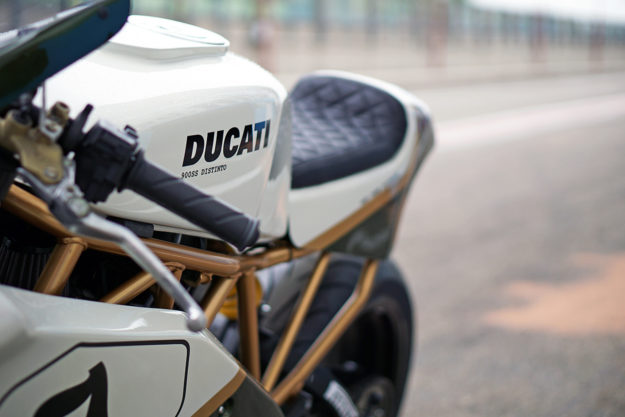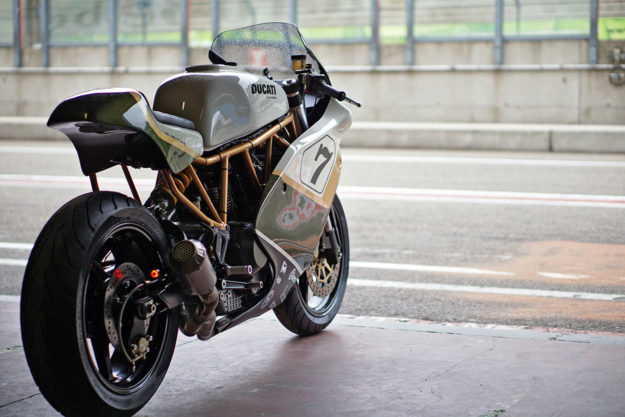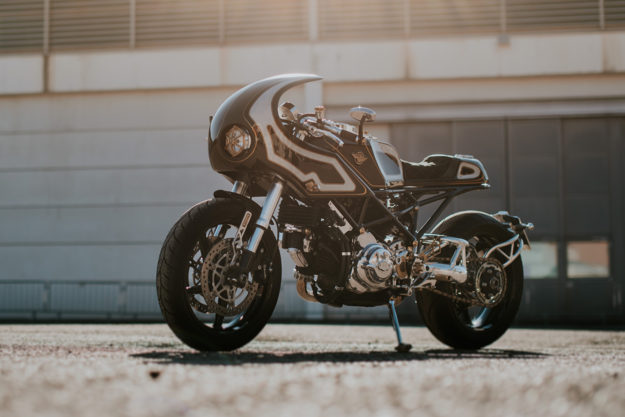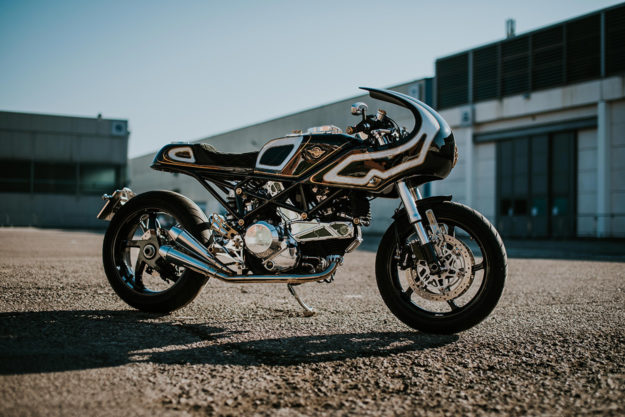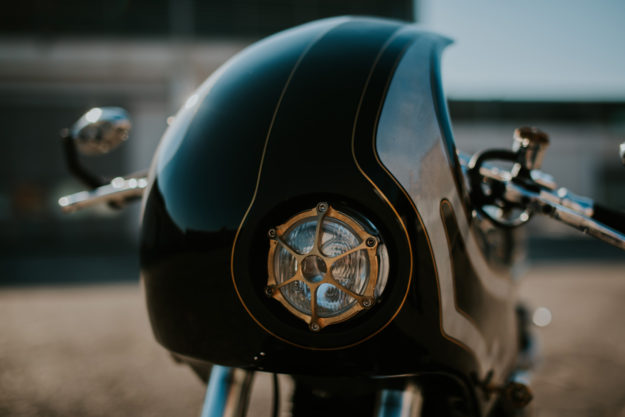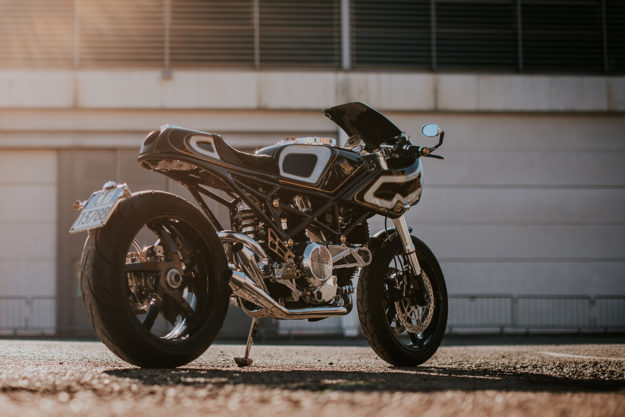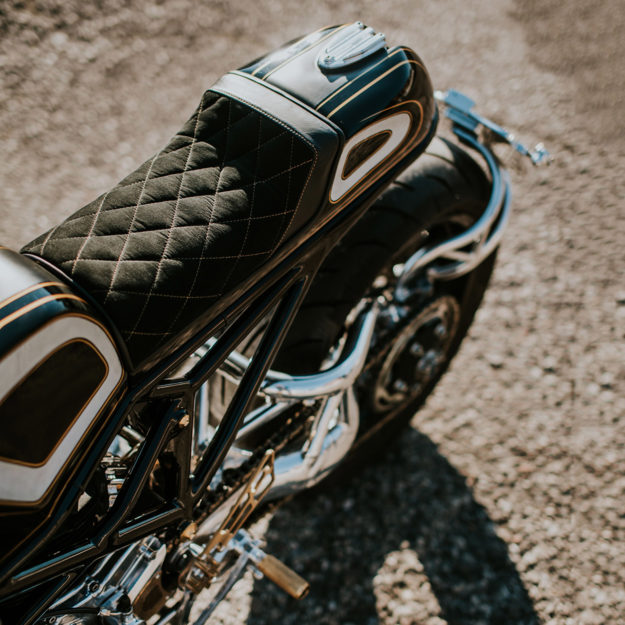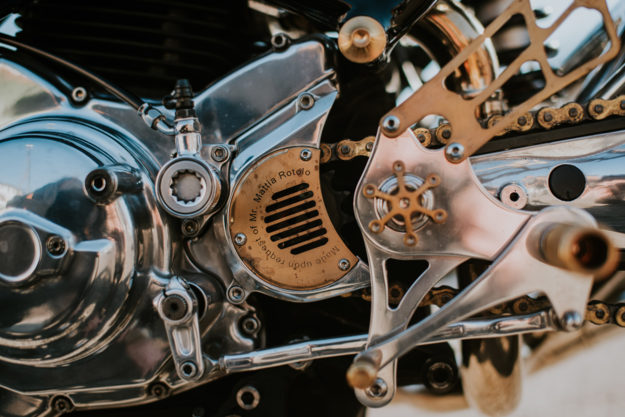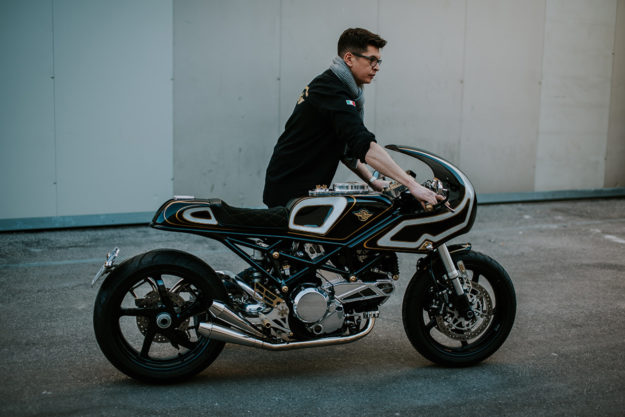#welovemonster
When it comes to Naked Sport Bikes, it’s undeniable that the Ducati Monster is one of the most iconic machines on the market and has been for the last 25 years. It has a look and sound that is undeniably “Ducati”.
From the first introduction of the Monster in Cologne back in 1992 to the sleek, streamlined performance machine that is today’s Monster, it is in my opinion, the pinnacle of naked sports bikes.
I was given the opportunity by Bow Cycles in Calgary to try out this amazing machine for a couple of days. I would like to thank Dave Amyotte, the General Sales Manager for this awesome opportunity. Please check out their website at Bow Cycle Calgary.
Specifications
- 881 cc Liquid Cooled Testastretta 11 degree, L-twin cylinder, Desmodromic distribution four valves per cylinder engine
- 80 kW (109 hp) @ 9,500 rpm (35 kW (46.9 hp) restricted power version of the Monster 821 available for restricted license holders)
- 86 Nm (64 lb-ft) of torque at 7,750 rpm
- Electronic injection, 53mm throttle body with full Ride by Wire system
- Lightweight 2-1 system, 2 lambda probes, stainless steel muffler and aluminum end cap exhaust
- 6-speed transmission
- Chain final drive
- Three predetermined driving modes (Sport, Touring, and Urban)
- Slipper and self-servo wet multi-plate clutch with mechanical control
- Front brake consisting of 2 x 320mm semi-floating discs, radially mounted Brembo M4-32 monobloc 4-piston calipers and axial pump, 9.1 MP Bosch ABS
- Rear brake consisting of a 245 mm disc, 2-piston floating caliper, 9.1 MP Bosch ABS
- Kerb weight of 206 kg (454 lbs)
- Adjustable seat height of 785-810mm (30.9 – 31.9 inches)
- 16.5L (4.4 US gal) Fuel tank capacity
- 5.3L/100km (44.38 mpg)
- Starting at CAD$ 13,395
First Impressions
My first impression of the 2018 Ducati Monster 821 when I walked into the showroom, was how good it looks. In its iconic Ducati Yellow bodywork and Charcoal Black frame, the bike just stands out.
I am 5’9” and the seat was perfect for me at the lowest setting. It is comfortable and I was able to plant my left foot square on the ground, keeping my right foot on the footpeg holding the brake without having the bike at too sharp an angle.
The handlebars are moved forward as on most sport bikes; however, the distance was not exaggerated, and I found them to be quite comfortable.
The tank is awesome! It’s nice and wide at the top, but it has the perfect cut-outs on the side for your knees to tuck in and help maintain control of the bike.
The seat is a bit hard but provided good support. The look of the seat is amazing and is a good representation of the attention to details that go into the manufacturing of this machine. I can’t speak to the passenger seat as I did not take a passenger for the review.
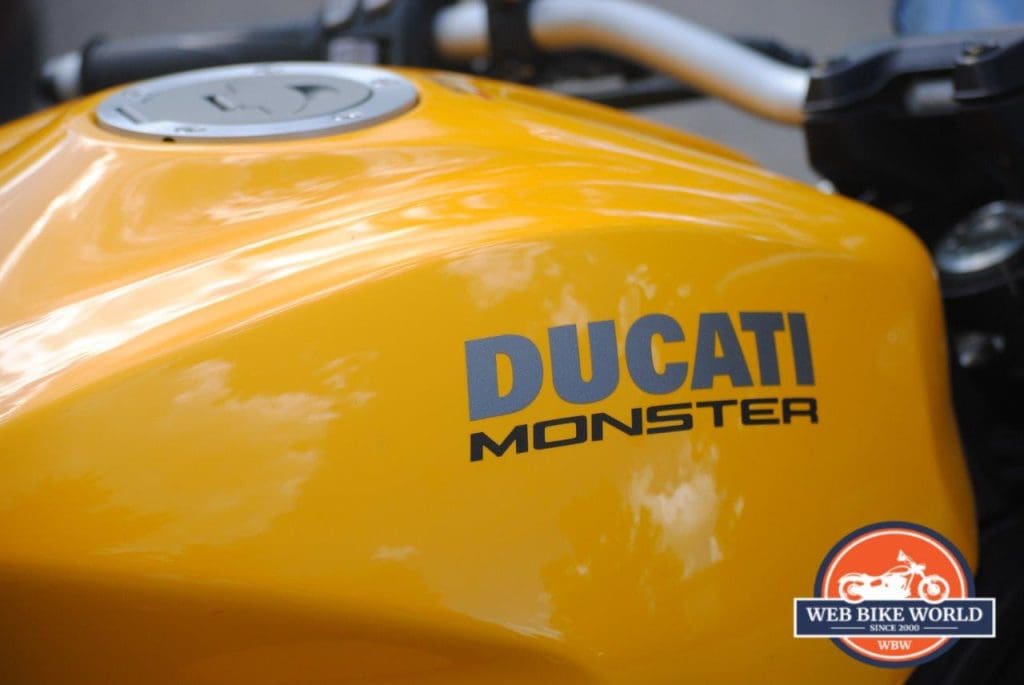
First Ride From The Dealer To My House
On the street, the Monster 821 feels quite tame. Acceleration is smooth and does not feel jerky at any speed. It does have a slight knock under 2500 rpm; however, at 3000 rpm the knock is gone and the beautiful growl of the 881 cc Testastretta engine reveals itself.
Oh, what a sound!
The smoothness and precision of this bike make it feel as though you are always in control. At low speeds, it is very stable. At no time did I feel the urge to put a foot down for stability.
City Riding
I wanted to give the Ducati a good ride in a variety of situations. Firstly, I took the bike out into the city. I wanted to see how the bike performed in traffic as an urban commuter. I wanted to test it out in slow driving conditions and see how it would handle avoiding potholes and other obstructions. I set the riding mode to urban and headed to downtown Calgary during the Calgary Stampede…
The Monster did not disappoint. In the city, this bike is able to handle everything an urban rider can through at it. It is very balanced at slow speed and does not give you the feeling that it will topple. It steers with minimal effort and is able to avoid hazards and obstacles with very little effort.
When it comes to stopping, the Brembo brakes on the front and rear of this bike combined with the Bosch 9.1 MP ABS as well as the Ducati traction control, ensures that you have an advantage when it comes to avoiding a collision.
The Monster ran quite cool in the city, despite all of the “stop and go traffic” and endless idling. The fans and the large radiator kept the bike running cool in an urban setting. In traffic, I appreciated that the Monster had a Slipper clutch. Shifting is very easy and my clutch hand was not tired or fatigued, even in heavy traffic.
Country Road Riding
After the city ride, I wanted to see how the bike would do on a country road. I left the city and headed out of town. Again, I was not disappointed. The bike accelerated nicely and the Pirelli Diablo Rosso III tires hugged the curves as if I was riding in a straight line.
I decided to test out the touring setting. Once set, it reminded me to let off on the throttle to engage the mode. It was like switching to a different motorcycle. The bike immediately felt more responsive and the acceleration became more immediate.
Riding a back road on a Ducati Monster 821 definitely puts a smile on your face. I was amazed at how agile the bike was in the twisties and how responsive it was on the straights. The touring setting highlighted the torque of the bike. I was absolutely thrilled at how well this machine performed. It takes very little to counter steer the Ducati Monster, it seems to instinctively want to do it on its own.
Time For Some Highway Riding
After a couple of hours of back roads riding, it was time to test this machine out on the highway. I was not sure what to expect of a naked sportbike at highway speeds. The Monster has an optional fairing available; however, the one I was riding did not have one installed.
I was expecting the wind to push me all over the place and my helmet to be bobbing everywhere from the wind. I could not have been more wrong. The Monster is at home on the highway. I was amazed at how little turbulence I felt at highway speeds. The bike handled beautifully and did not jerk about even when passing a tractor-trailer.
It was time to switch to sport mode and see what this setting was all about. I switched the control, let go of the throttle and the bike became a full-on sport bike. The exhaust tone changed, the throttle response changed and the seemingly mild-mannered machine showed off its monster.
In one word, WOW!
The bike maintained it’s smooth acceleration, but it was undeniable that this machine has the heart of a racer. This is where the steel trellis frame highlighted the precision that is undeniably Ducati. With very little effort, I was able to pass slower traffic. At no time did I find that I was not in control of the bike. The Monster 821 played its role very well in allowing me to experience the road in a very exhilarating and fun way.
Riding Position
I was quite comfortable on the Ducati Monster 821. The seat is adjustable and at the lowest setting, it was very suitable for my height. The handlebars are moved forward and allowed me to have a comfortable riding position without having to reach too far forward.
The foot position is a bit aggressive; however, I did not feel that it was uncomfortable in the city. It was excellent on the highway.
Digital Instrument Cluster
The Ducati Monster 821 has an amazing instrument cluster. The simplistic display is awesome when riding. It has everything you need at a glance. The RPM display is clear and easy to read, the speedometer consists of digital numbers that are clear, the gear indicator makes it easy to see what gear you are in and the fuel gauge is very handy to know how much fuel you have left.
I appreciate that the background color changes from white in bright light conditions to black in lower light conditions. This makes it easier to read during the day and reduces the glare caused by too bright an instrument cluster for nighttime riding. The screen also provides information on the additional settings that are available with this motorcycle such as the predefined riding modes.
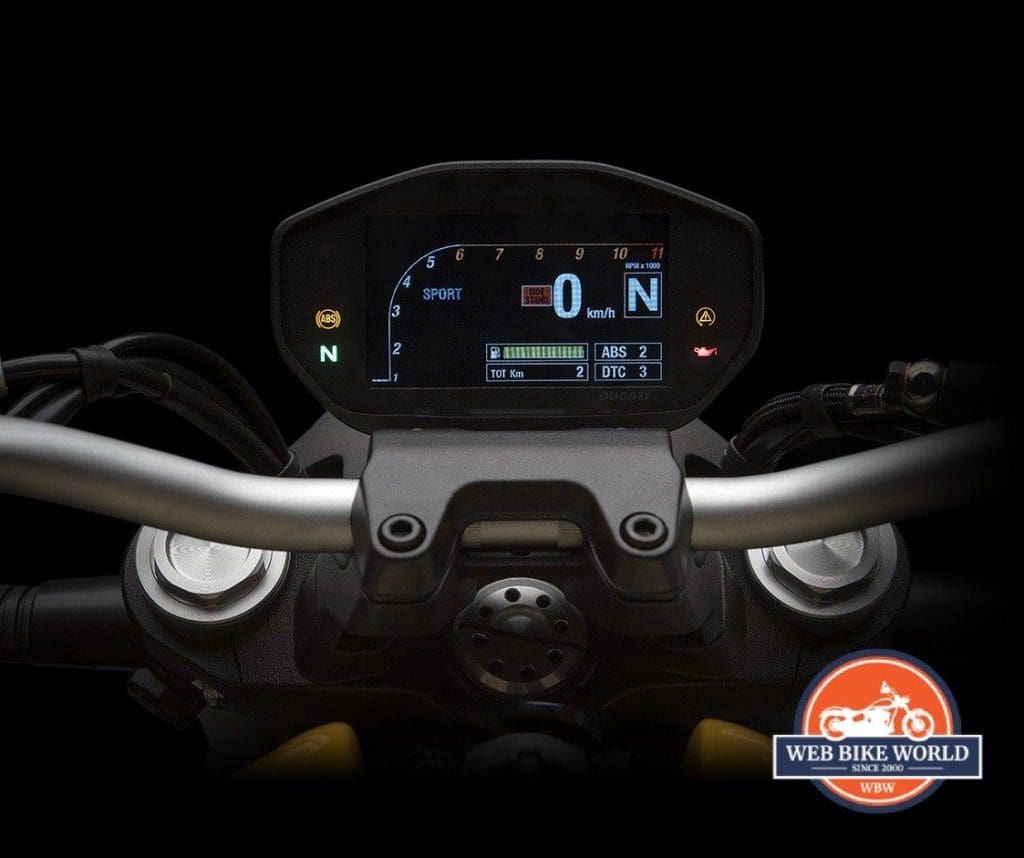
Photo from Indian Autos Blog
Tires
The Ducati Monster 821 comes equipped with Pirelli Diablo Rosso III tires. The front tire is a 120/70 ZR17 and the rear is a 180/55 ZR17
They stick to the road and are consistent from full upright position to cornering on a back country road. They are quite responsive in a wide variety of situations.
I really liked these tires during my review of the motorcycle.
Brakes
The brakes on the Ducati Monster 821 are incredible. They consist of 2 Brembo M4-32 monobloc, 4 piston calipers and axial pump with 9.1 MP Bosch ABS as well as a 245mm disk, 2-piston floating caliper with a 9.1 MP Bosch ABS in the rear.
The only downfall to having such amazing brakes on the front is that the 43mm forks on the Monster are non-adjustable and quite light. This causes the front of the bike to dip when the brakes are applied.
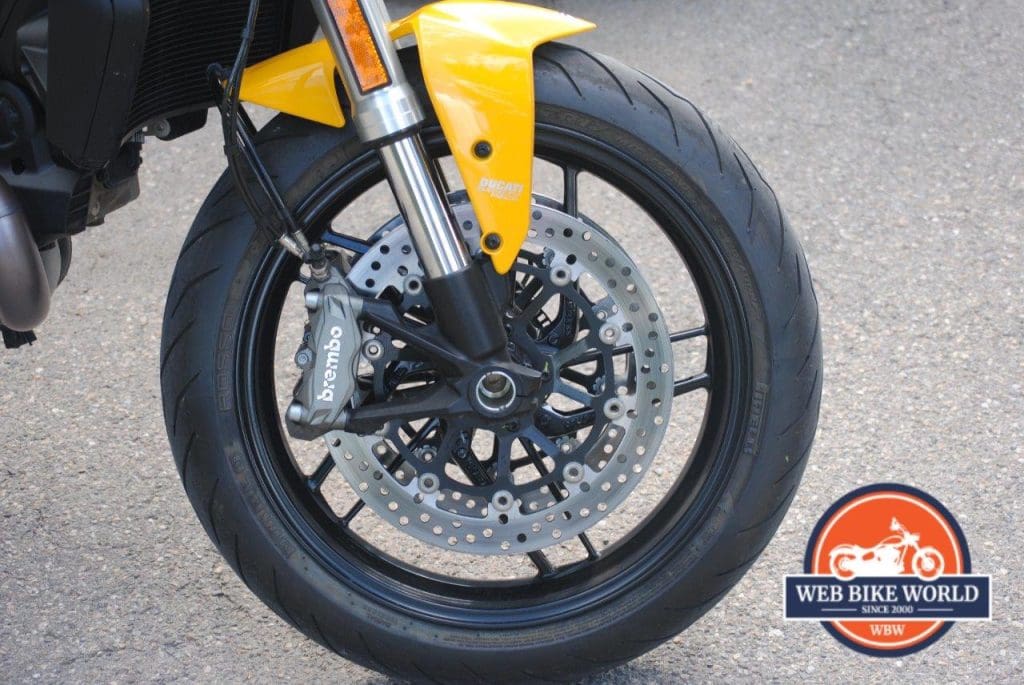
Mirrors
I find that the mirrors on the Ducati Monster 821 are the Achilles heel of this awesome machine. They lack adjustability.
When trying to adjust the mirror while riding, it came loose and I had to stop on the side of the road and tighten it. It uses an Allen key that I did not have. Luckily, I was able to turn the mirror and snug up the bolt that way.
The mirrors appear to be made for very tall people. In my situation, the mirrors did not give me a clear view of side or rear traffic without having to adjust my riding position significantly. When riding, I would get a view of my shoulder.
The Ducati brochure shows an optional aluminum rear-view mirror. It appears to have more adjustability. In my opinion, having adjustable mirrors is a must.
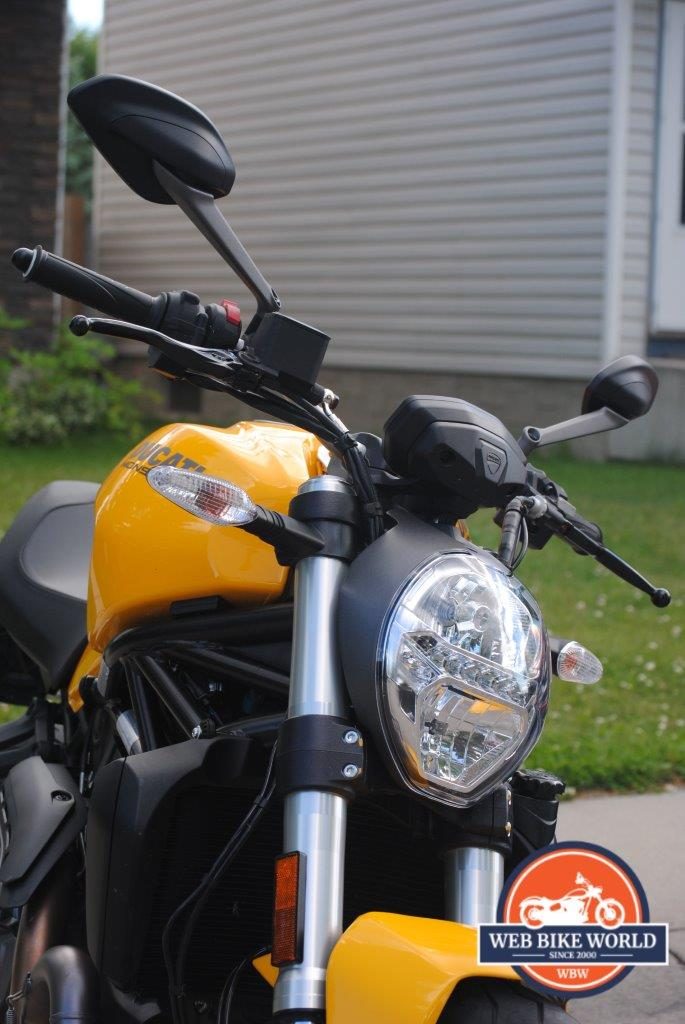
Exhaust
The Ducati Monster 821 features a lightweight 2-1 system, 2 lambda probes, stainless steel muffler and aluminum end gap.
The exhaust not created by this system is refined and sounds really good in sports mode. I did find it to be a bit quiet for my preference; however, the Ducati brochure shows an optional carbon fiber racing silencer option. I would be curious to hear the sound difference that this would make.
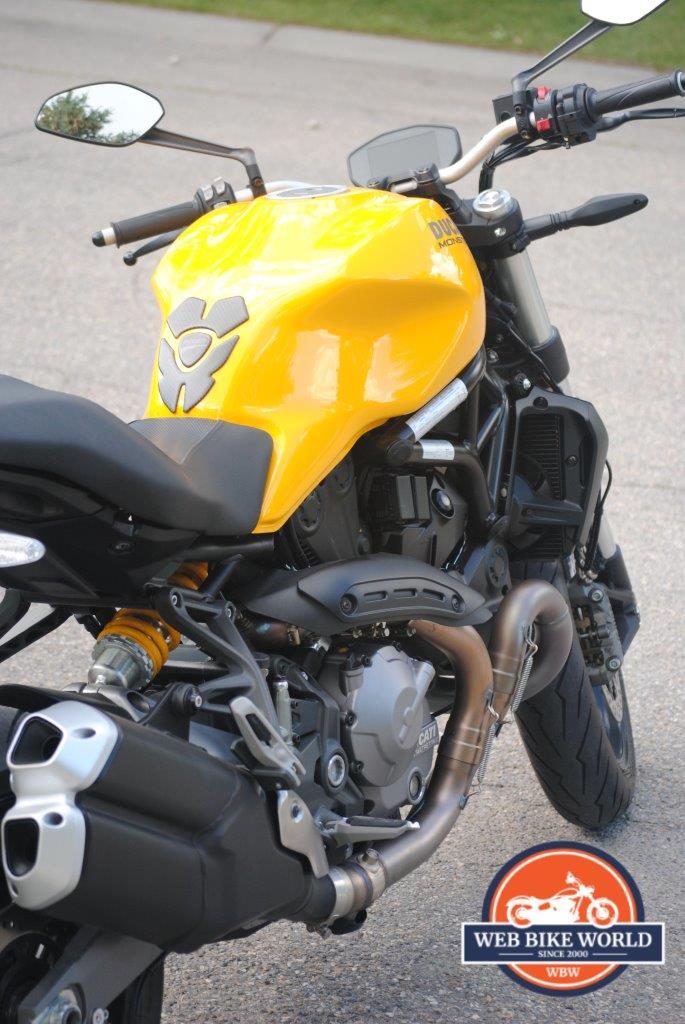
Conclusion
I really liked the Monster 821. It’s a blast to drive.
With the different modes available, this bike would be a good candidate for a newer rider getting into their second bike or for a seasoned rider that just wants to go out and have fun.
It is a powerful motorcycle; however, it is very smooth and predictable as one would expect from a twin cylinder engine. The relatively flat torque curve and the 109 horsepower combined with the weight of this motorcycle gives it a finely tuned feeling that Ducati is known for.
It is a comfortable bike that will fit a number of riders with the adjustable seat and the adjustable rear mono-shock.
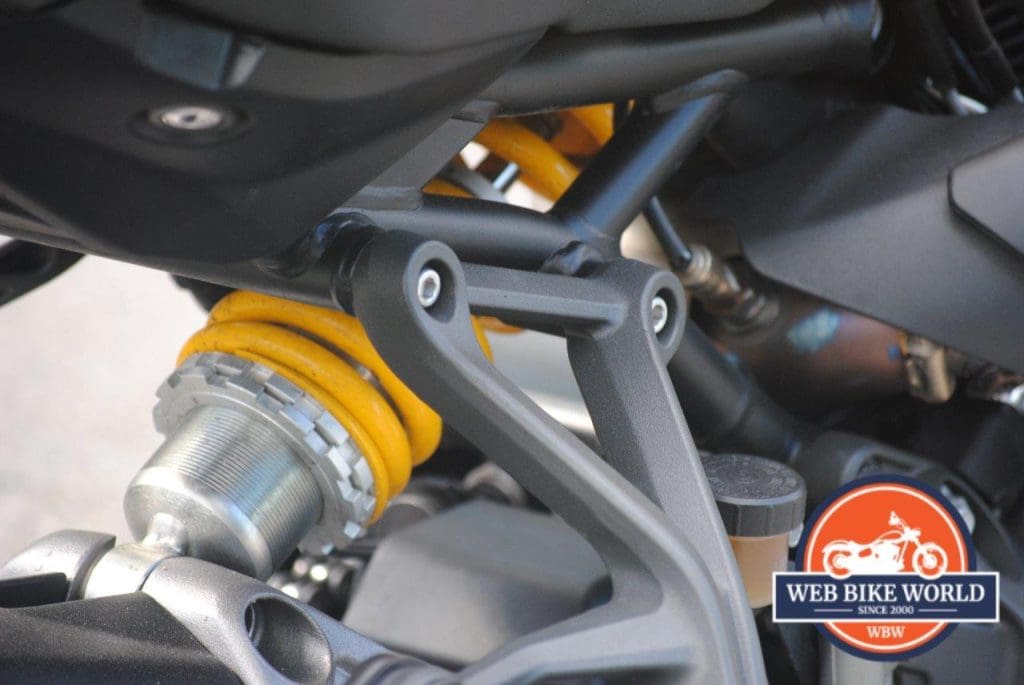
It comes with a 24 month, unlimited mileage warranty with the option of adding an additional 12 or 24 months with the Ever Red Extended Warranty.
I would recommend the Monster 821 to my friends and family. It is an awesome machine that I hope to have a chance to ride again soon.
The post 2018 Ducati Monster 821 Review: We Love Monster appeared first on Web Bike World.
